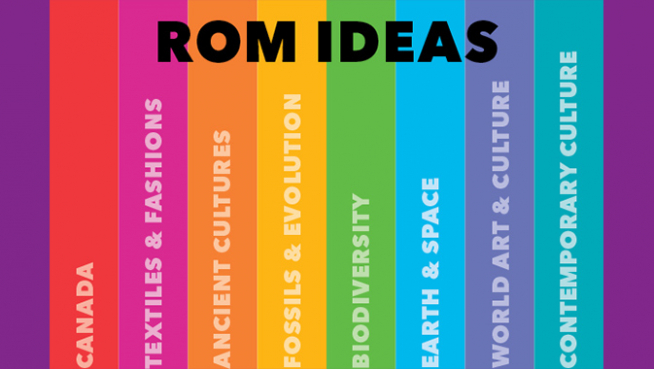ROM Ideas: Fossils & Evolution

To let you in on the latest insights and discoveries from behind the scenes, ROM Ideas, formerly the ROM Colloquium, invites its patrons to step into the realm of ROM researchers, technicians, and other experts who perform ground-breaking work in our labs, collections areas, and at field sites all around the world. This free two-day event (May 3rd & 4th) highlights the latest global discoveries and ongoing research within each of our eight Centres of Discovery, delivered in 12-15 minute talks. The eight centres work collaboratively to capture the ever-changing natural and cultural worlds we live in, and to help you, our audience, understand these changes. Each Centre is animated by expert collections and research staff, programmers, educators and communications people who create public programs that offer memorable visitor experiences and build partnerships across communities.
Join ROM Fossils & Evolution this Sunday May 4 as they unearth their discoveries, and highlight the treasures within our collections. The Centre of Fossils & Evolution works extensively to promote interest in palaeontology and evolution through peer-reviewed research, public programs, field trips, lectures, exhibitions, and popular writing. Here’s a sneak peak of what you’ll hear at ROM Ideas:
Why is it important for the ROM to study fossils and evolution?
Dave Rudkin: The best reply to this is embodied in our Centre description on the website: "By discovering, preserving, and studying fossils from around the world, ROM palaeontologists learn how life evolved over time. The more we learn about this evolutionary heritage, the more we can appreciate how humans form part of the Earth’s complex fabric of life. ROM research also enables us to reconstruct past ecosystems and large-scale patterns of biodiversity through deep history. This understanding of how ancient organisms, both large and small, responded to biological and environmental changes contributes to our understanding of climate change and biodiversity loss today."
What are the strengths of the ROM's fossil collections?
Dave Rudkin: On the Invertebrate Palaeontology side, our main highlights include exceptionally-preserved fossils from the world-famous Cambrian Burgess Shale in British Columbia, superb fossils and casts of unusual Ediacaran life forms from Mistaken Point in Newfoundland, exceptional trilobite, eurypterid, and echinoderm fossils from Paleozoic rocks in Ontario, and important collections of fossil plants and animals from Coal Age deposits in Illinois and Montana (USA).
Kevin Seymour: The vertebrate fossil collection at ROM is particularly strong in Cretaceous dinosaurs from Alberta, Paleozoic fish from Montana, Jurassic ichthyosaurs from Europe, Tertiary mammals from Saskatchewan, Pleistocene birds and mammals from Peru, as well as Pleistocene mammals from Ecuador and Florida.
